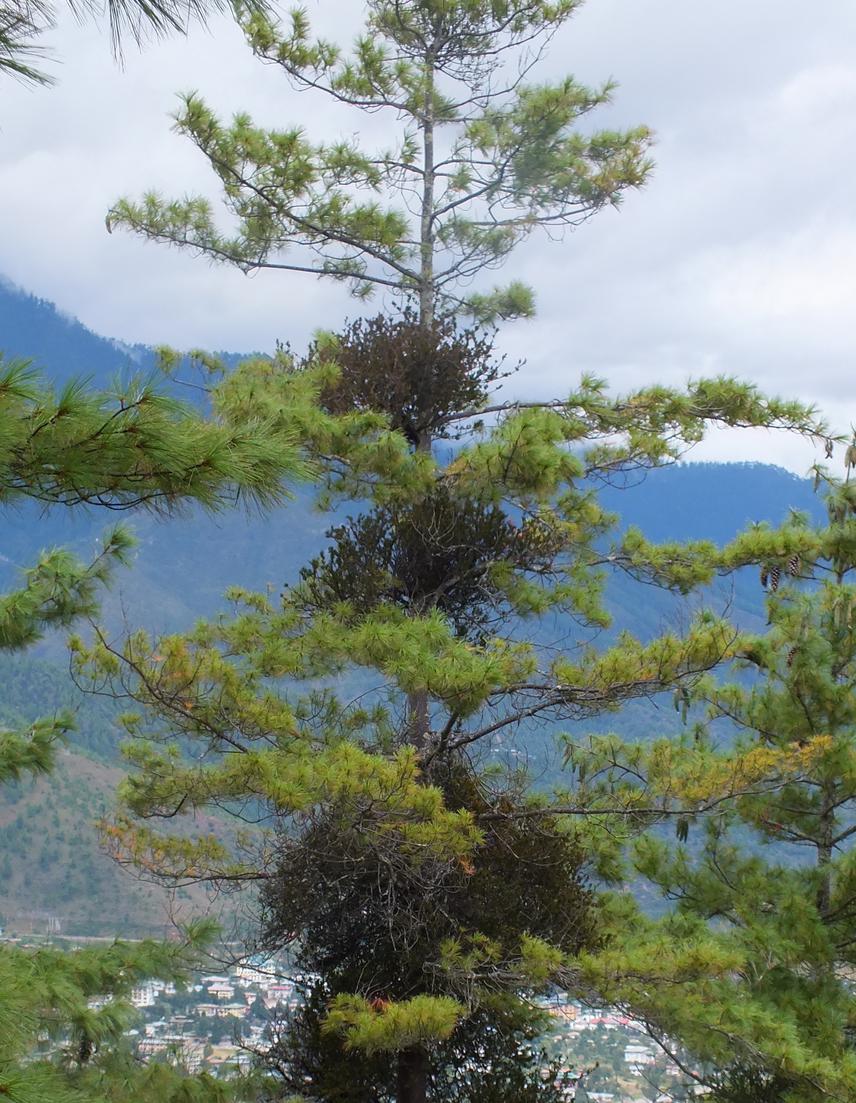Tashi Yangchen
This project aims to create reference about mistletoes diversity and their infection assessments on conifers in Bhutan.
This project aims to study mistletoe diversity and their threat assessments on conifers which will serve as the scientific protection and management of conifers forest. The project will be done in Thimphu, Western part of Bhutan. Mistletoe intensification and damage are progressive and cumulative but increase exponentially, accumulate and destroy the large area. This project is justified to detect parasitic mistletoe in which the early detection will allow timely eradication or control action, minimize the losses of conifer value and limit the cost of control. From this project national economic and ecological important conifers trees such as, Abies densa, Cupressus corneyana, Picea spinulosa, Pinus wallichiana, Pinus roxburghii etc. will be helped to remain healthy for vibrant ecosystems and intake habitats for great biodiversity value. It will attempt to share the concepts of healthy forest for the vibrant ecosystems and habitats for rich biodiversity. It will also give the scope of mistletoes in detrimental effect of conifer forests to conservationist for scientific management and planning. It will provide simple and synthetic summary information for analyzing the economic loss, ecological stability, planning, control, and scientific management of mistletoe in conifers forests.

Taxillus kampferi infecting Pinus wallichina
Detection programmes (i, Remote Sensing, GIS and Area Sampling; ii, Field surveillance) and Purposive sampling (Key Informant) techniques for detection of mistletoes will be analysed and adopted for this project. Mistletoe infection in trees will be based on observed symptoms on affected trees (branches, twigs and stems). Infection assessments of mistletoes will be done by 6-class dwarf system method (Hawksworth, 1977) and finally calculate the mistletoe severity index and incidence. Information on number of species affected (measure DBH and height of each infected trees) will be used to estimate mistletoe impact on economic value.
This project will highlight the mistletoe diversity and infection severity which will be valuable for the forest management and it will help to incorporate the traditional and scientific knowledge for forest protection and management from mistletoes for first time in Bhutan.